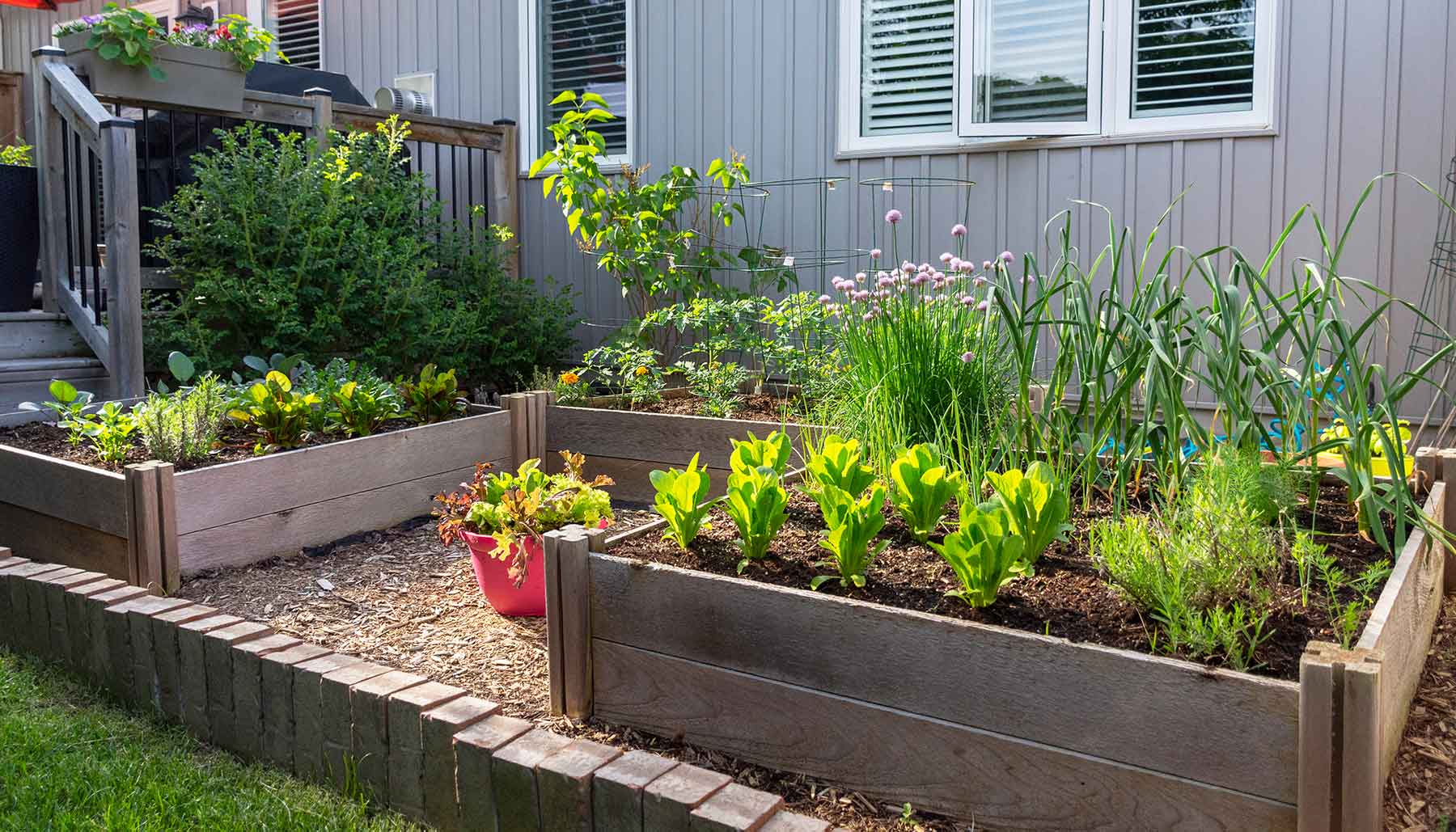Just like people, plants can have friends, too. Some plants just get along together brilliantly!
That’s where companion planting comes in. It’s the practice of growing different plants together that benefit each other. Certain combinations can make your plants more productive — whether it’s because some plants can repel pests that munch on your veggies, they attract pollinators, or they have complementary nutrient requirements.
Don’t leave your crops feeling lonely! Let’s take a look at some plant pairs that grow better together.
Tomatoes and Basil
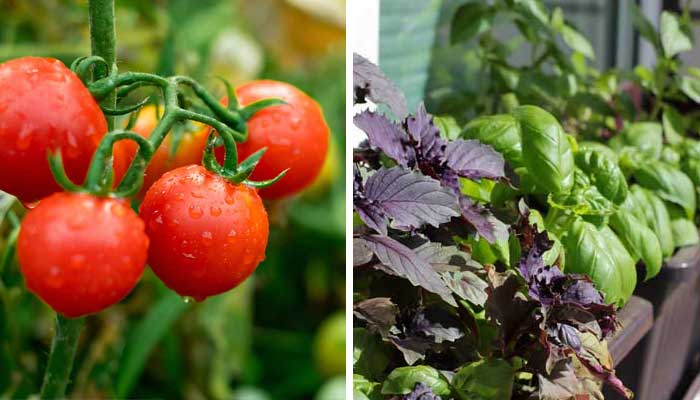
Okay, so it might seem like a no-brainer to plant tomatoes and basil in the same garden because they go together like peanut butter and jelly! And sure, this part of your garden is two-thirds of the way to a Caprese salad.
But the real reason you should plant these two together? The scent of basil can help repel the dreaded tomato hornworm–a pest that can annihilate your tomatoes. Basil can also help repel aphids, whiteflies, and more. If you allow basil to bloom, they can also attract pollinators to your tomato plants. Read more about how to grow the perfect tomato!
Nasturtiums and Brassicas
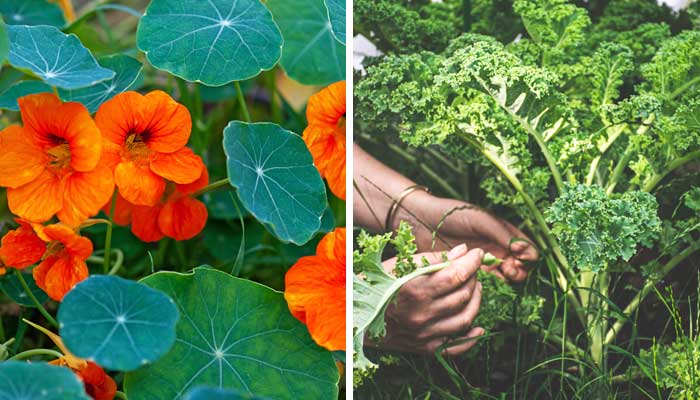
These flowers will brighten up your garden with their rich jewel-toned colors, but they can also pull double duty and protect your broccoli, cabbage, kale, and more. These flowers will attract hungry caterpillars away from your brassicas.
As an added bonus, the nasturtium is completely edible, flowers and leaves alike! They have a peppery tang, and the seed pods can even be used as a substitute for capers.
Nasturtiums and Cucumbers

I know we just talked about nasturtiums, but these gorgeous flowers can protect your cucumbers, too. As it turns out, plenty of garden pests don’t like these flowers.
Plant nasturtiums around the base of your cucumber trellis. The peppery nasturtium flowers will help repel the cucumber beetle. They can also help ward off aphids, which can help with not only cucumbers but a wide variety of other garden plants.
Beans, Corn, and Squash

These three crops have been planted together by Native American communities for centuries. When the triad are planted together, it’s popularly known as Three Sisters planting. If you’re growing these crops, you should absolutely grow them all together in the same bed.
Tall corn stalks act as a trellis for the climbing beans, while the beans add nitrogen to the soil that the corn can absorb. The sprawling squash vines shade the ground, helping to prevent weed growth and evaporation of soil moisture.
Carrots and Onions
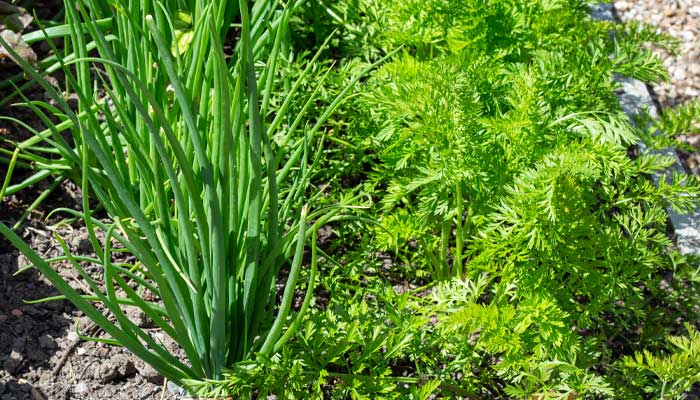
Carrots can wind up at the mercy of the aptly named carrot fly. The carrot fly itself doesn’t damage root vegetables, but its larvae do. You can wind up with an entire crop of inedible carrots if they take hold.
To help deter them, plant onions with your carrots. These will chase off carrot flies, along with other pests like aphids. If you’re growing beets, parsnips, and other plants that are susceptible to the carrot fly, give them some onion neighbors, too.
Lettuce and Mint
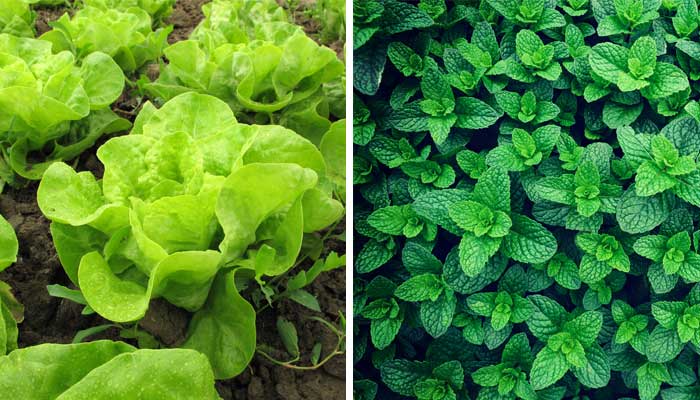
If you have a problem with slugs munching on your lettuce leaves (hey, who doesn’t love a good salad?), planting mint can help keep the slimy foes at bay. Mint can also help repel other pests from the garden, like aphids, ants, earwigs, and spider mites.
Depending on where you live, you might want to think about planting the mint in containers instead of directly into the garden bed. Mint is known for being aggressive, and can quickly take over an entire bed.
Marigolds and Most Plants

You may have noticed marigolds bordering garden beds over the years. This bright flower has traditionally been used around flower beds and vegetable gardens alike for a long time now. Sure, they look pretty, but a marigold border is also an excellent pest deterrent. Marigolds can help repel aphids, several varieties of beetles, squash bugs, cabbageworms, nematodes, and more. Plus, they can even discourage rabbits.
These sunny plants also bloom all season, which means they attract plenty of needed pollinators to your garden.
See how to keep your companion garden free of weeds with these all-natural, DIY, weed killers.


